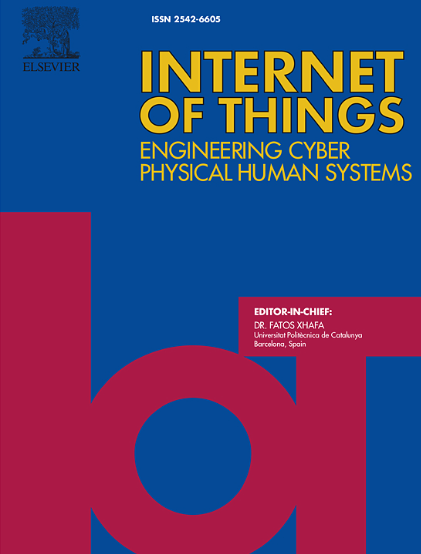漩涡特征定位:桥接表格式工业物联网数据和基于图像的深度学习
IF 6
3区 计算机科学
Q1 COMPUTER SCIENCE, INFORMATION SYSTEMS
引用次数: 0
摘要
来自工业物联网设备的表格数据通常使用基于决策树的机器学习技术进行分析,这些技术与高维和数字数据作斗争。为了克服这些限制,利用基于图像的深度学习方法(如卷积神经网络)的优势,开发了将表格数据转换为图像的技术。这些方法将相似的特征聚类到具有固定大小的不同图像区域中,而不考虑特征的数量,类似于实际照片。然而,这增加了过度拟合的可能性,因为当在表格格式中仔细选择相似的特征时,通常会丢弃以防止此问题。此外,固定的图像大小可能导致特征较少的像素浪费,从而导致计算效率低下。我们引入涡流特征定位(VFP)来解决这些问题。VFP根据特征的相关性对特征进行排列,将相似的特征从图像中心以漩涡模式间隔,图像大小由属性计数决定。在具有不同实值属性的七个数据集的测试中,VFP优于传统的机器学习方法和现有的转换技术。本文章由计算机程序翻译,如有差异,请以英文原文为准。
Vortex Feature Positioning: Bridging tabular IIoT data and image-based deep learning
Tabular data from IIoT devices are typically analyzed using decision tree-based machine learning techniques, which struggle with high-dimensional and numeric data. To overcome these limitations, techniques converting tabular data into images have been developed, leveraging the strengths of image-based deep learning approaches such as Convolutional Neural Networks. These methods cluster similar features into distinct image areas with fixed sizes, regardless of the number of features, resembling actual photographs. However, this increases the possibility of overfitting, as similar features, when selected carefully in a tabular format, are often discarded to prevent this issue. Additionally, fixed image sizes can lead to wasted pixels with fewer features, resulting in computational inefficiency. We introduce Vortex Feature Positioning (VFP) to address these issues. VFP arranges features based on their correlation, spacing similar ones in a vortex pattern from the image center, with the image size determined by the attribute count. VFP outperforms traditional machine learning methods and existing conversion techniques in tests across seven datasets with varying real-valued attributes.
求助全文
通过发布文献求助,成功后即可免费获取论文全文。
去求助
来源期刊

Internet of Things
Multiple-
CiteScore
3.60
自引率
5.10%
发文量
115
审稿时长
37 days
期刊介绍:
Internet of Things; Engineering Cyber Physical Human Systems is a comprehensive journal encouraging cross collaboration between researchers, engineers and practitioners in the field of IoT & Cyber Physical Human Systems. The journal offers a unique platform to exchange scientific information on the entire breadth of technology, science, and societal applications of the IoT.
The journal will place a high priority on timely publication, and provide a home for high quality.
Furthermore, IOT is interested in publishing topical Special Issues on any aspect of IOT.
 求助内容:
求助内容: 应助结果提醒方式:
应助结果提醒方式:


